Red Perennial Flowers
These red perennial flowers are popular choices for adding vibrant color to gardens.
Deadheading flowers will encourage some of these perennial plants to continue blooming for months.
Salvia
Salvia features upward growing spikes of flowers that attract bees and other pollinators. The flower shape provides an idea spot for pollinators to land and enjoy.
Perennial Salvia are cold hardy down to Zone 3 and feature flowers in colors of red, white, purple and cream. They feature aromatic blooms and foliage, and an array of flat mat-forming mounds to upright growing clumps.
Salvia ranges from 12 to 24 inches tall and blooms from June through September. Remove dead flower stalks to keep the plant looking fresh.
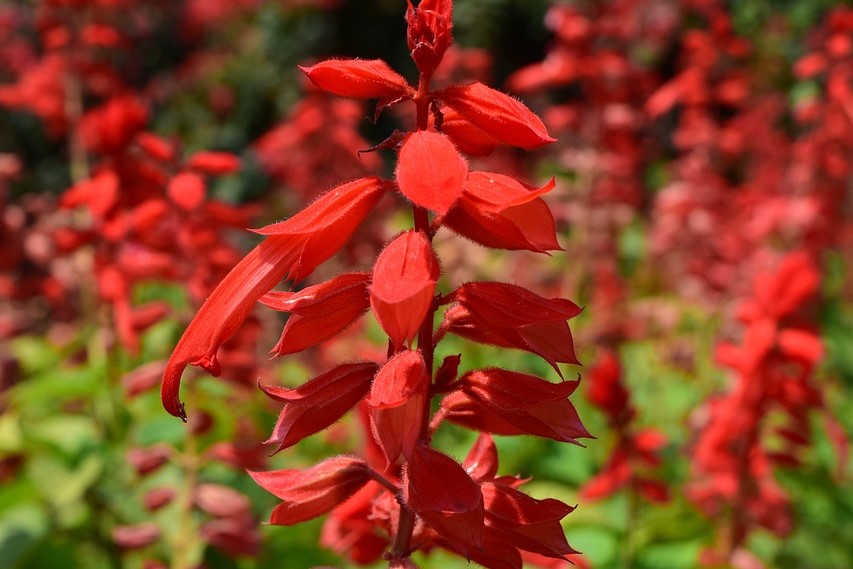
Astilbe
Astilbe has fluffy plumes in colors of red, purple, pink and white. Some varieties are compact, growing only 14″ – 16″ high, while others can grow as tall as 48″. Compact varieties are perfect for small gardens, border fronts, or container plantings.
Astilbes are long-lived perennials that are most comfortable when grown in rich soil and light shade to filtered sun. They will grow in full shade, but will not bloom as prolifically there.
It’s recommended to avoid cutting Astilbe back in the winter, as the old foliage helps protect the plant from winter damage. It’s best to prune in early spring, before the new growth begins.
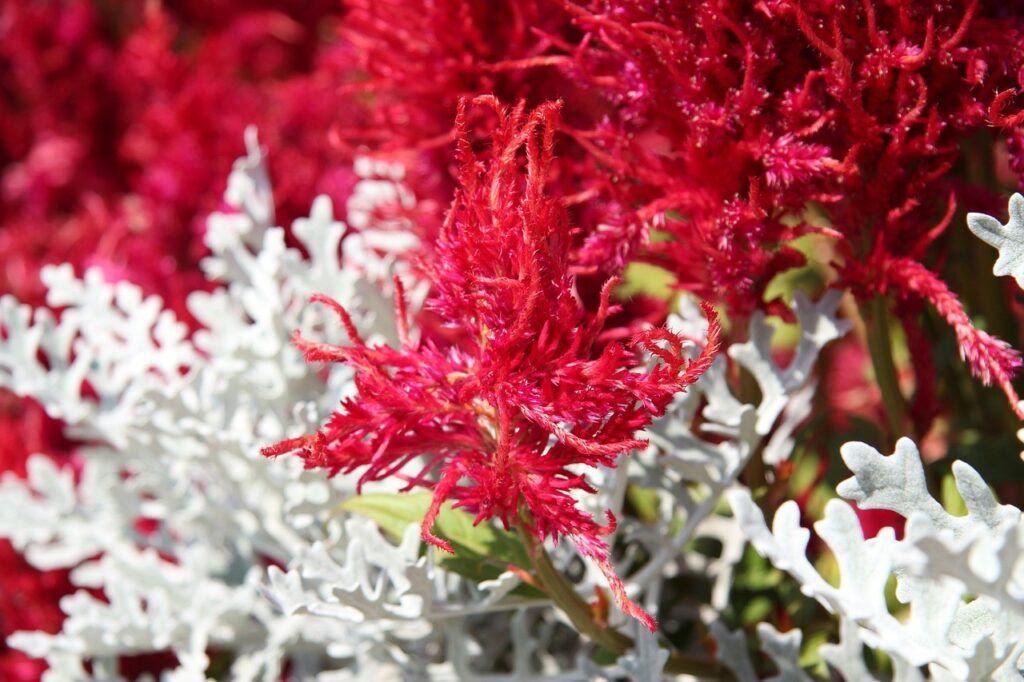
Daylily
Daylilies can bloom from summer to fall. Some varieties such as Stella D’Oro provide second rounds of blooms in the same year. Remove the seed pods to keep plants tidy.
Daylilies grow best in full sun and can tolerate dry hot conditions. You will often see them used in landscaping around parking lots or along roadways for this reason. To keep them blooming at top performance, plan to divide clumps every few years.
Colors and color combinations of daylilies seem almost endless. Some red varieties have a soft velvety look that are stunning.
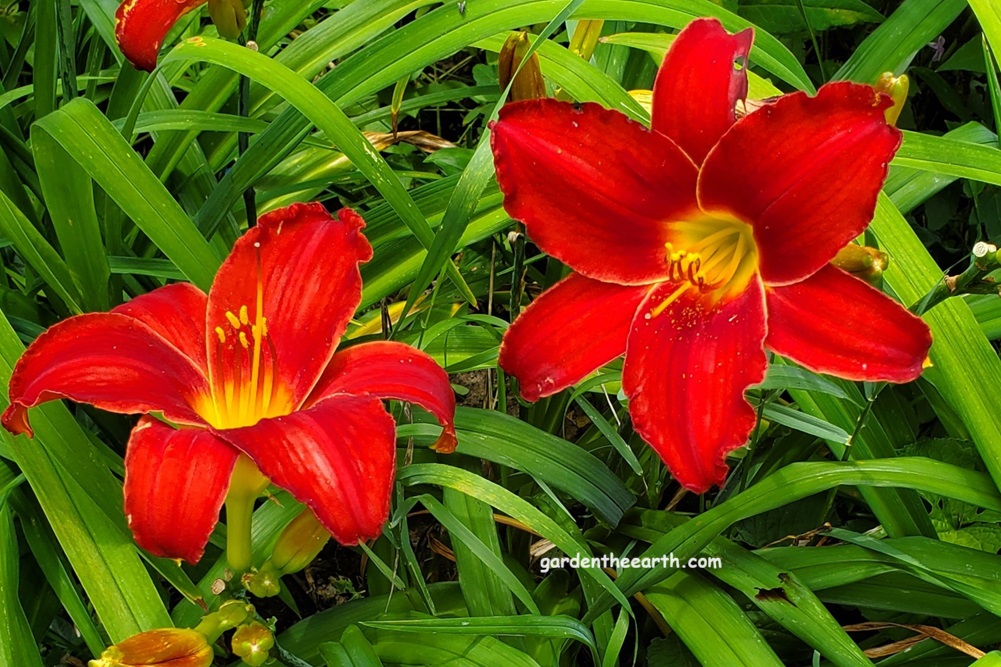
Yarrow
Yarrows are distinguished by airy lacy foliage and flat flower clusters that open atop multiple stems. Colors of yarrow range from red to pink, white, purple, yellow, orange, salmon and peach.
Yarrow can grow from 12″ to 48″ tall. Taller varieties may require staking. Full sunlight and pruning helps keeps the plants compact and strong.
Yarrow is a wonderful plant for flower arrangements and consistently cutting flowers keeps them sending out small bunches of compact blooms.
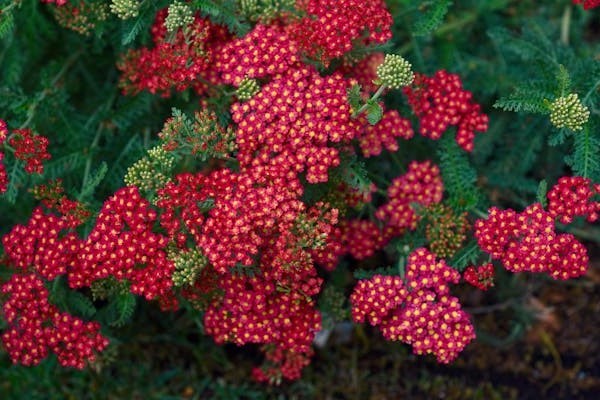
Penstemon
Penstemon are easy-care perennial plants that grow in upright mounds with spikes of flowers in many colors, including red, white, rose, blue, purple, and bi-color.
Full sun and drought tolerant, Penstemon only requires occasional watering. Useful in the rock garden as focal points or for vertical interest in containers.
Penstemon can spread via self-seeding, but are not considered invasive. Divide every few years to rejuvenate the plant.
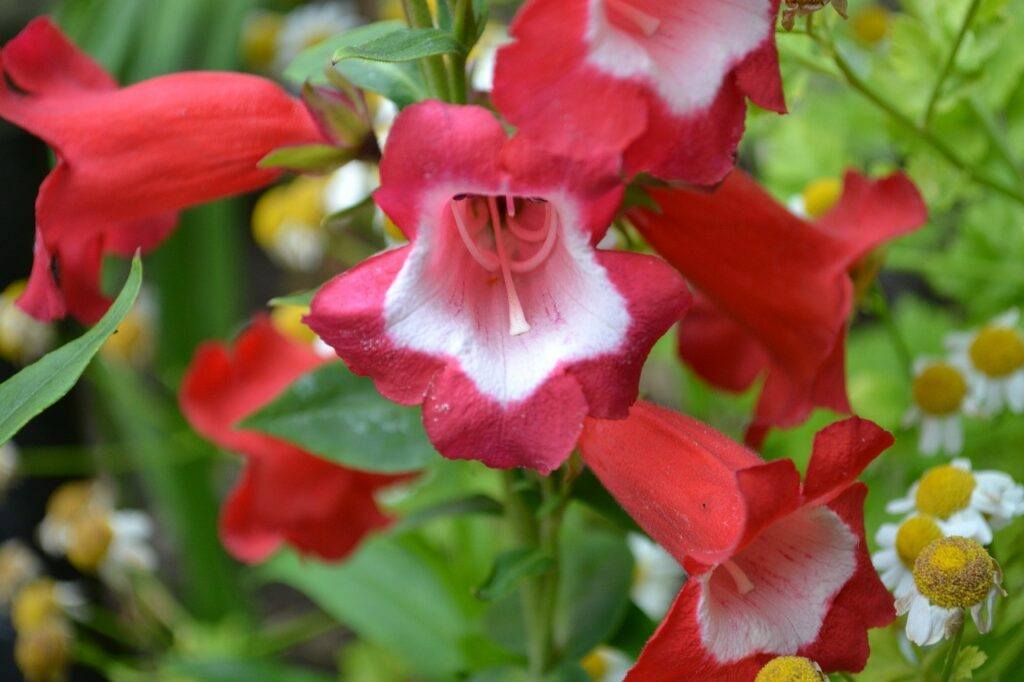
Coneflower
Coneflowers are sturdy perennials that bloom in many colors such as red, yellow, pink, orange and gold. The spiky centers are often tipped in colors that make them appear to glow.
Varieties can range from 12″ high to 5 feet high. Deadhead Coneflowers often to extend bloom time, and use for long-lasting flower arrangements.
Coneflowers grow in full sun and adapt well to poor soil. It’s easy to harvest coneflower seeds from the spiky center and grow new plants.
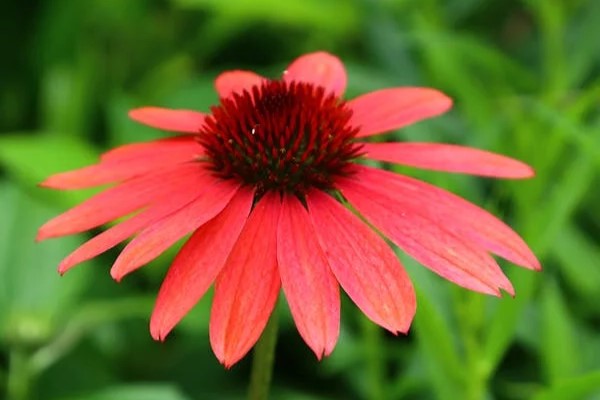
Poppy
Poppies are typically perennials as far as Zone 7. Look for crepe-papery flower petals in vivid colors of red, white, yellow and hot pink and orange.
Poppy plants love full sun but will grow in partial sun and afternoon shade, especially in the warmer growing zones. They prefer well-drained moist to slightly drier soils, and are tolerant of a wide range of soil types.
The center of the poppy flower where the seeds are produced is unique with star-like furry shapes. Deadhead regularly to keep the plants from self-seeding.
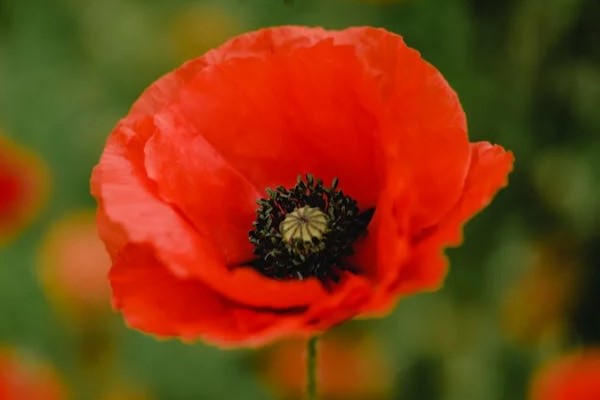
Bee Balm
Bee Balm is a hardy perennial plant with flower colors ranging from red, purple and pink to Varieties range from 12″ tall to 48″ tall.
Hummingbirds and butterflies love bee balm. They are entertaining to watch as they bounce around the tops of the spiky flowers.
Bee Balm is an easy perennial to grow in full sun to part shade but can become invasive under certain conditions. Heat tolerance makes it an ideal choice for dry soil, and its minty foliage is deer resistance.
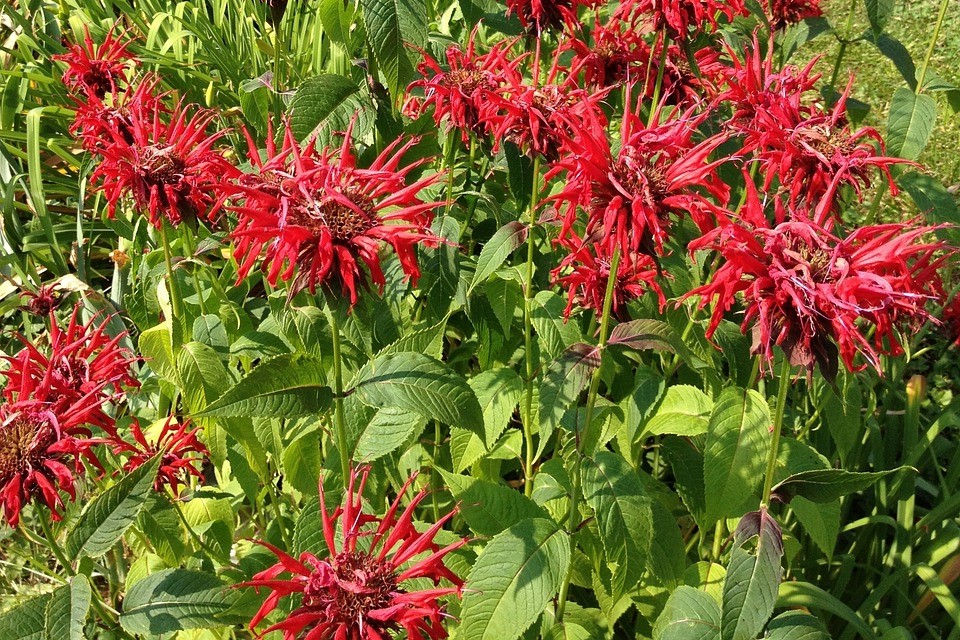
Peony
Peonies are long-lived cold-hardy perennials with showy flowers. Colors include red, purple, pink, yellow, white and mixed.
Plant peonies in a sunny location for best performance. They prefer a neutral soil pH, with a pH of 6.5 being optimum. An application of a slow-release fertilizer every several years should be sufficient.
Peonies don’t require a lot of maintenance. Deadhead flowers after blooming, and allow foliage to remain on plant until the autumn.
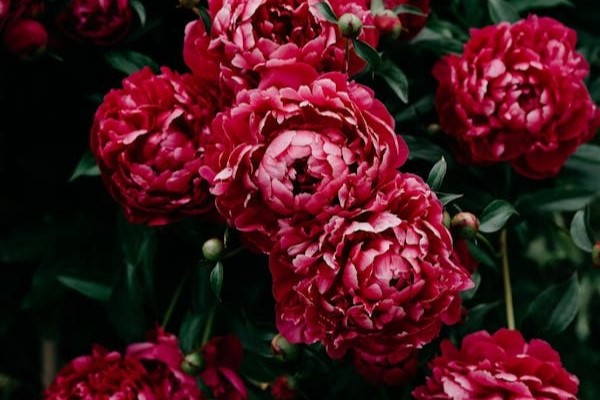
Rose
Roses flower best in at least 6 hours of direct sunlight a day. Choose a location in good, enriched soil that drains well and has good air circulation.
Plant rose bushes in the spring after the last frost date, and in the fall about 4-6 weeks before the first frost.
Roses are various plant types that can be grown in containers, trained onto trellises or placed in garden settings. Look for specific care requirements for each type to get the best performance.

Dianthus
Dianthus are compact plants that can be used as ground cover, tucked into crevices of rock gardens, in rows to soften edges or in containers.
Grow dianthus in full sun, keeping the soil moist until plants are established, then allow to dry between waterings. Deadhead flowers to encourage new blooms.
Ruffled and sometimes with double blooms, dianthus have some of the most striking petal details that appear to be artistically brushed on.
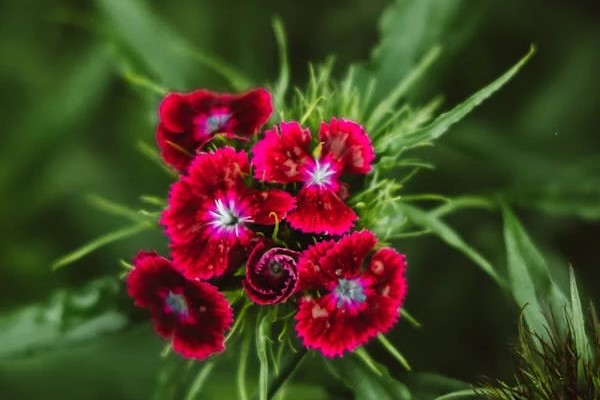
Which of these red perennials are your favorite? Let me know in the comments below.
Explore More


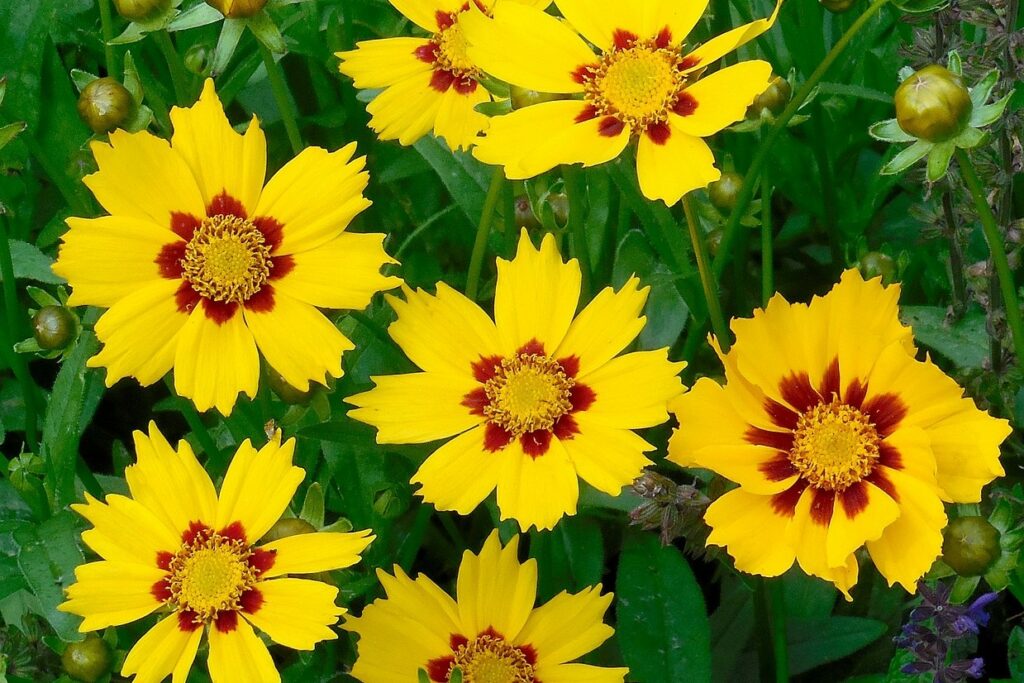

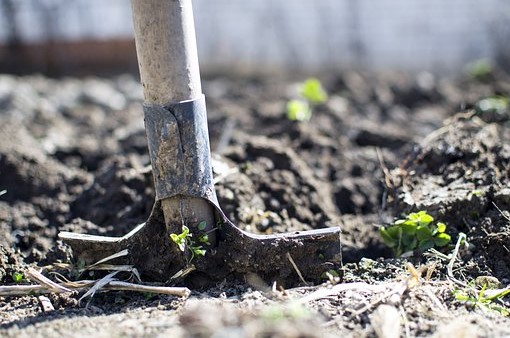


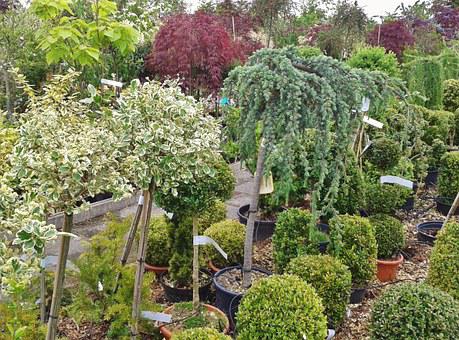

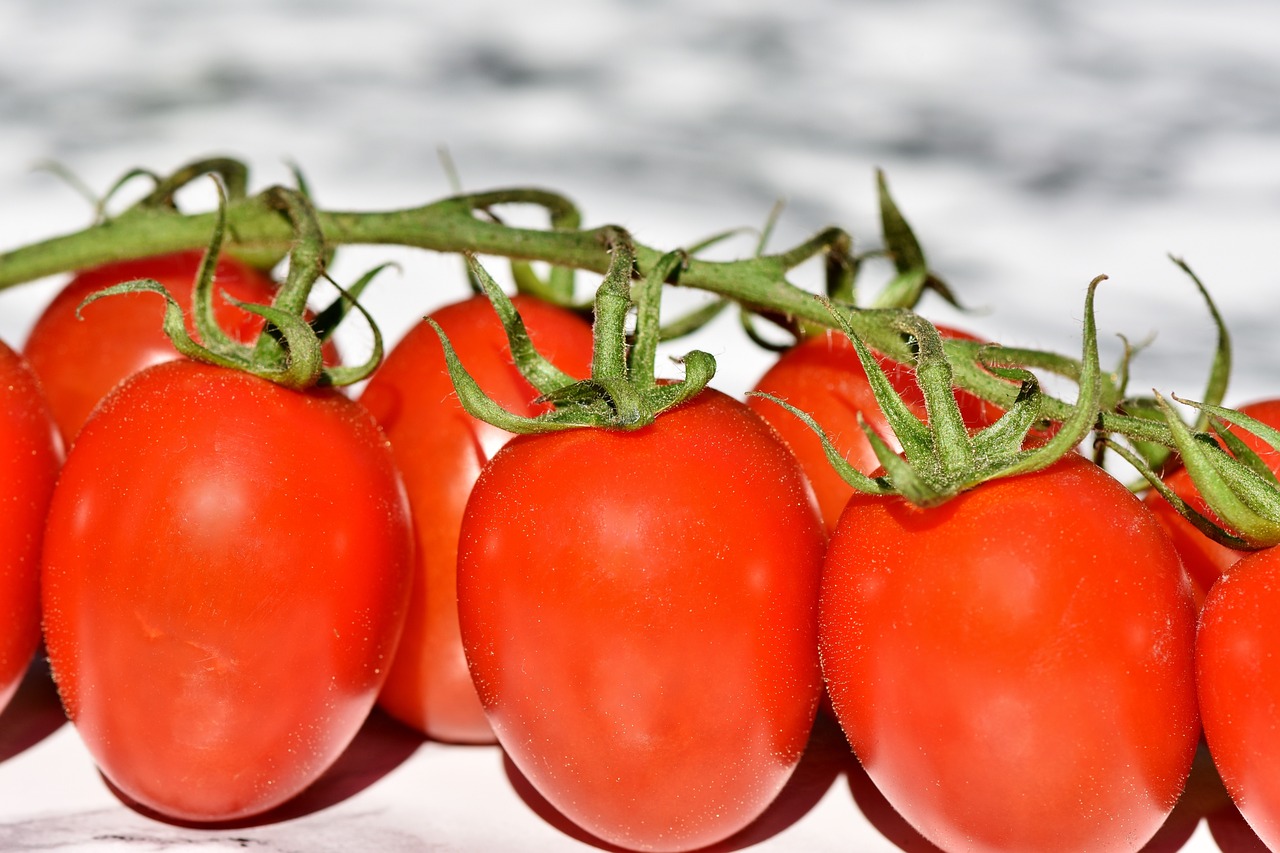
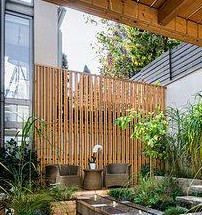
Comments
Red Perennial Flowers — No Comments
HTML tags allowed in your comment: <a href="" title=""> <abbr title=""> <acronym title=""> <b> <blockquote cite=""> <cite> <code> <del datetime=""> <em> <i> <q cite=""> <s> <strike> <strong>